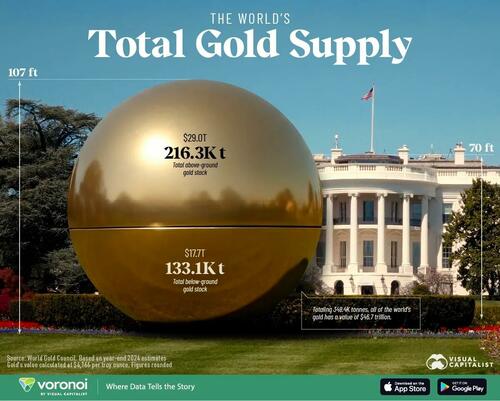A wave of elation swept through the scientific community when the National Ignition Facility (NIF) at the Lawrence Livermore National Laboratory (LLNL) in California announced in December that they obtained energy of 3.15 million joules (MJ), gaining 50% more than the 2.05MJ of laser energy put in a nuclear fusion capsule. This is a leap in an effort spanning six decades and represents a turning point in laser fusion research, though there are still miles to go before we can harness fusion energy to run a power plant for human needs.
Two types of nuclear reactions produce energy — fission, which is conventionally used in nuclear power plants worldwide, and fusion, which is how the sun, for example, generates energy.
For decades, nuclear fusion has been pursued as a safer, bountiful energy source. The basic idea is to fuse two light nuclei — typically deuterium and tritium — both isotopes of hydrogen. When the nuclei are forced to combine by an external driver, their internal energy is released that can be harnessed. The powerful external driver ionises the deuterium and tritium, and heats them into a dense, hot plasma. Most of the observable universe is in this hot plasma state. The gravitational collapse of a star causes its hydrogen gas to compress to a high density, and at the same time, heating it to millions of degrees Celsius, causing fusion reactions in a chain. Unlike nuclear fission — which produces energy by the break-up of a heavy nucleus (typically uranium) into lighter radioactive components that cannot be disposed of safely — fusion is seen as a safe process, and with a much larger supply of fuel because the light elements are far more abundant and safer than uranium.
The confinement of the hot plasma is, however, a huge challenge. There are now two routes to achieve this, both involving complex engineering and many first-of-a-kind advances. In the first, the hot plasma is trapped at a sufficient density in a torus-shaped container called the tokamak, which has a strong magnetic field created by current-carrying coils. Invented by the Russians, several tokamaks are functioning worldwide, including at the Institute for Plasma Research at Gandhinagar. The biggest effort in this direction, where India is a significant partner, is a multinational enterprise called the International Thermonuclear Experimental Reactor (ITER), which is under construction at Cadarache, France.
The other method that has caused the present excitement is where the deuterium and tritium are held in a tiny capsule, a couple of millimetres long, and irradiated by multiple, focused high-power laser pulses in flashes of a few nanoseconds (a nanosecond is a billionth of a second). The lasers compress, ionise and heat the deuterium and tritium to high temperatures so rapidly that the nuclei fuse before the gas ball explodes. We catch it before its disassembly or in its inertial state.
The idea of laser fusion was proposed soon after Theodore Maiman’s invention of the laser in 1960. A significant push was provided by quantitative estimates made as far back as 1972, also at LLNL. Why, then, has the path been so long and difficult?
Simply put, the hurdle has been the complex behaviour of the plasma, fraught with instabilities that prevent the achievement of the required temperature and density. A crucial requirement is a high level of symmetry needed in the irradiation of the fusion capsule, a challenging condition to achieve. Sophisticated physics models and high-level computer simulations are used to predict this behaviour, but the plasma has continued to challenge us, revealing new facets every time. Research in this area has produced a wealth of understanding of these dynamics that are important for several other branches of science, including astrophysics, materials physics, and studies of planetary interiors.
Laser fusion has been pursued for several decades, but NIF was a leap of faith, started in early 1995 and commissioned in 2009 for over $2 billion. An engineering and technology marvel, it occupies three football fields and 10 stories and delivers 192 laser beams of nanosecond duration, totalling a whopping 2MJ of energy. NIF was expected to achieve the present breakthrough as early as 2010, the 50th anniversary of the laser, but challenges from the fusion plasma threw plans out of gear. Nevertheless, it is a tribute to the scientists, engineers and decision makers at NIF that the programme was sustained and encouraged through this uncertain period, and holds lessons for science planners and policy makers on the importance of backing quality research, even when no immediate answers are on the horizon.
What changed in the last 10 years? Target designs were significantly improved, and the laser spatial and time profiles were constantly optimised. In that sense, the December 13 announcement captures the triumph of the never-say-die efforts of over a decade.
The breakthrough heralds a significant shift, because, for the first time, we have gained energy from fusion. But there is a long road ahead before we can make laser fusion reactors that feed a power plant. The laser facility itself consumed over 300MJ to produce the 2MJ laser pulses needed. The wall-plug efficiency (the efficiency with which a system converts electrical power into optical power) is still small. For a power plant, we will have to produce much more than all the energy we take from the existing power grid. Secondly, the NIF laser pulses were emitted at a very low rate (400 shots in all of 2017). At this rate, the plant could only run in bursts — not acceptable for practical use. Thirdly, the sophistication and cost of the laser systems and target fabrication facilities make this a massive operation compared to a conventional power plant or alternative energy sources such as solar and wind. We need improvements, some dramatic, on all these fronts. The road ahead is long and unknown, but we have turned a significant corner.
G Ravindra Kumar is a distinguished professor of nuclear and atomic physics, TIFR, and winner of the 2003 Shanti Swarup Bhatnagar Award and the 2015 Infosys PrizeThe views expressed are personal
















